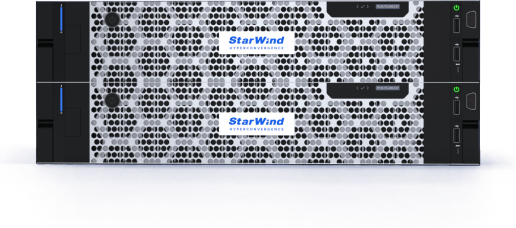Introduction
Debian is a reliable Linux-based operating system widely used on servers, desktops, and other devices. Renowned for its stability and extensive software support, Debian’s latest stable release, Debian 12, is freely available and features long-term support (LTS). It accommodates various desktop environments such as GNOME, KDE Plasma, Xfce, and more.
Proxmox VE 8.3 is a robust virtual environment platform designed for creating and managing virtual machines (VMs). This platform supports running multiple systems, including Debian 12, and allows users to access these VMs remotely. Proxmox VE 8.3 also includes built-in data backup with encryption and supports local and shared storage options.
This guide walks you through the steps to install and configure Debian 12 on Proxmox VE 8.3.
How to Install Debian 12 on Proxmox 8.3 VE?
To properly install the Debian 12 system on Proxmox 8.3 Virtual Environment (VE)
Create Environment for Debian 12 on Proxmox 8.3 VE
Configure Debian 12 on Proxmox VE
Configure the Package Manager for Debian 12 on Proxmox 8.3 VE
Setup Post Installation on Debian 12
How to Remove or Uninstall Virtual Machine (Debian 12) from Proxmox 8.3 VE?
Create Environment for Debian 12 on Proxmox 8.3 VE
The environment can be created for Debian 12 machines on Proxmox 8.3 VE through the provided steps.
Step 1: Upload “Debian*.iso” File
For installing Debian 12 on Proxmox 8.3, first, upload the ISO file to your Virtual machine using the below-mentioned steps;
- Access the Proxmox Virtual Environment via a dedicated IP.
- Select the Local machine (i.e. local (srv).
- Select the ISO Images option from the given list.
- Click the “Upload” button and select the media (Debian*.iso) from your local drive:
After following the above steps, the Debian*.iso file will be uploaded to your Proxmox virtual environment.
Step 2: Create a Virtual Environment
Now, let’s create a separate virtual environment for your Debian 12 system. Click the “Create VM” button to begin the creation process of a virtual machine:
Step 3: Specify Virtual Environment (VE) “Name”
When the “Create VM” button is clicked, a new window will pop up on your screen. Specify the “Name” for your Virtual Machine in the “Name” field:
Step 4: Select “Debian*.iso” Image
In the OS tab, locate the ISO Image field and select the Debian*.iso media (as shown below):
Step 5: Configure “System” Settings
In the System section, enable the “Qemu Agent” option and leave the rest of the options as default:
Step 6: Specify VE “Disk” Size
You can adjust or specify the size of the Disk for your machine according to your requirements from the “Disks” tab:
Setting up CPU type and cores is the necessary step for your Virtual Environment. You can adjust the CPU cores and type (i.e. host) as per your needs:
Specify the memory (RAM) for your machine. The minimum recommended memory is 4096 MB:
Modify the network settings or leave them as default by clicking the “Next” button:
Step 10: Save Virtual Environment Settings
Once you have completed the steps for creating a virtual machine, carefully review the settings and confirm by clicking the “Finish” button:
Configure Debian 12 on Proxmox VE
The following steps can be performed to configure Debian 12 on Proxmox 8.3 Virtual Environment.
Step 1: Start “Virtual Machine”
To initiate or launch the created Virtual Machine, locate the machine and click on “Console” and then, select the “Start Now” button to initiate the Virtual Machine:
Step 2: Start “Debian 12” Installation
Select the “Graphical Install” option from the given list:
Step 3: Select System “Language”
From the languages list, choose your preferred language, such as English:
Select your country or location like the United States:
Step 5: Select System “Keyboard”
Set up your keyboard language by selecting it from the list:
Step 6: Set up the System “Hostname”
Specify your system Hostname, for instance “karim”:
Step 7: Configure System “Domain”
Enter your domain name in the given field (if any):
Step 8: Set up the System “Root Password”
Set up a password for a “Root” user:
Step 9: Configure System “User and Password”
Create a new user (i.e karim) by entering a name in the required field:
Specify a good and strong password for a new user:
Under the “Configure the clock” category, select your timezone for your Debian 12 machine:
Step 11: Specify VE “Partitioning Method”
Select the partitioning method from the given methods, such as “Guided-use entire disk. You can choose the manual method to customize your disk partition:
Step 12: Choose “Partition Disk” for Debian 12
Confirm the selected disk partition by clicking the “Continue” button:
You can select the scheme for your partition from the “Partitioning scheme” according to your requirements. If you are not sure, simply select the “All files in one partition (recommended for new users)”:
Select the “Finish partitioning and write changes to disk” and click on “Continue” button to save the changes:
Confirm saving the changes to the disk by selecting the “Yes” option:
Configure the Package Manager for Debian 12 on Proxmox 8.3 VE
After completing the configuration of Debian 12 on your Proxmox virtual environment, proceed to set up the Package Manager for your system using the following steps.
Step 1: Select Mirror Country for Debian
In the “Configure the package manager” section, select the preferred mirror country to download the Debian packages for your system:
Step 2: Choose “Debian Archive Mirror”
Select the Debian archive mirror, such as deb.debian.org, from the provided list:
Provide your HTTP proxy information, if any or leave it blank:
If you want to share your experience with developers, participate in the survey or select the “No” option to proceed next:
Step 3: Install Necessary “Softwares”
When prompted a list of necessary software, choose a relevant one from them, such as Debian desktop environment, GNOME, and Standard system utilities:
Next, select the “Yes” option to install the GRUB bootloader on your system. This will enable your Debian system to boot properly:
You can either choose the device manually or select the recommended disk where GRUB will be installed, such as /dev/sda:
Step 5: Reboot Virtual Machine
After installing the GRUB bootloader, reboot your virtual machine to complete the setup and configuration process:
Setup Post Installation on Debian 12
Perform these few steps after completing the installation of Debian 12 on your Proxmox 8.3 VE.
When your system reboots, start your Debian 12 virtual environment through the Proxmox VE console
Step 2: Log In to Your “Debian 12”
Log in to your Debian 12 virtual machine using your credentials:
Add language(s) of your choice for the Debian 12 system:
Step 4: Select “Keyboard” Layout
Select the Keyboard layout for your Debian machine from the given list:
Step 5: “Privacy” Configuration
Set up your system’s privacy settings. You can enable or disable the location services on your Debian 12 machine:
Step 6: Add Your Online Account
You can configure and synchronize your online accounts, such as Google:
When you see the message “All done!”, it indicates that your Debian 12 is ready to use on Proxmox 8.3 Virtual Environment:
Step 7: Verify “Debian” Release
To verify the installed release of Debina 12 on Proxmox 8.3 Virtual Environment (VE), run the following command from the Debian terminal:
lsb_release -a
How to Remove or Uninstall Virtual Machine (Debian 12) from Proxmox 8.3 VE?
The following steps simplifies the uninstallation of Virtual Machine, such as Debian 12 from your Proxmox 8.3 VE.
Step 1: Log In to Proxmox 8.3 VE
Open your web browser and enter your Proxmox VE IP address. Enter “Root” and Password to log in to the Proxmox server:
Step 2: Remove Virtual Machine (ie. Debian 12)
Select the particular machine, you want to remove, navigate to the “More” option, and then select “Remove” from the list:
NOTE: Before starting to remove. make sure your machine is properly shut down.
Enter the Virtual machine ID in the empty field to confirm the removal process:
Step 3: Verify the Uninstalled Virtual Machine
If the particular machine is not exist in your panel list, it shows that you have successfully removed the Virtual Machine (i.e. Debian 12) from your Proxmox 8.3 VE:
FAQs
Can I Install the Debian 12 package on Proxmox 8.3 Virtual Environment?
Yes, you can install the Debian 12 system on Proxmox 8.3 Virtual Environment.
- Login to your Proxmox 8.3 VE.
- Upload the Debian 12 media to Proxmox VE
- Create a separate Virtual Machine for Debian 12.
- Start the configuration process using Proxmox VE Console.
Is it necessary to set up a separate environment for Debian 12 on Proxmox 8.3 VE?
Yes, setting up a separate virtual environment is necessary for installing the Debian 12 system. It ensures better package management for your Debian 12 machine.
How can I access the Proxmox 8.3 VE after configuration?
To access the Proxmox 8.3 Virtual Environment;
- Open your web browser.
- Enter the dedicated IP address in the address bar.
- Enter your credentials as a root user.
Can I create multiple Virtual Machines on Proxmox 8.3 VE?
Yes, the Proxmox 8.3 Virtual Environment allows you to create and manage multiple virtual machines at the same time.
Can I remove the existing Virtual Machine (Debian 12) from Proxmox 8.3 VE?
Yes, It is very easy to remove a virtual machine, such as Debian 12. First, shut it down, locate the “More” option, and then select “Remove” to delete the particular Machine in the Proxmox 8.3 VE.
Conclusion
Deploying Debian 12 on Proxmox VE 8.3 involves straightforward steps: creating a virtual machine, configuring Debian during installation, and completing necessary post-installation setups.
















































